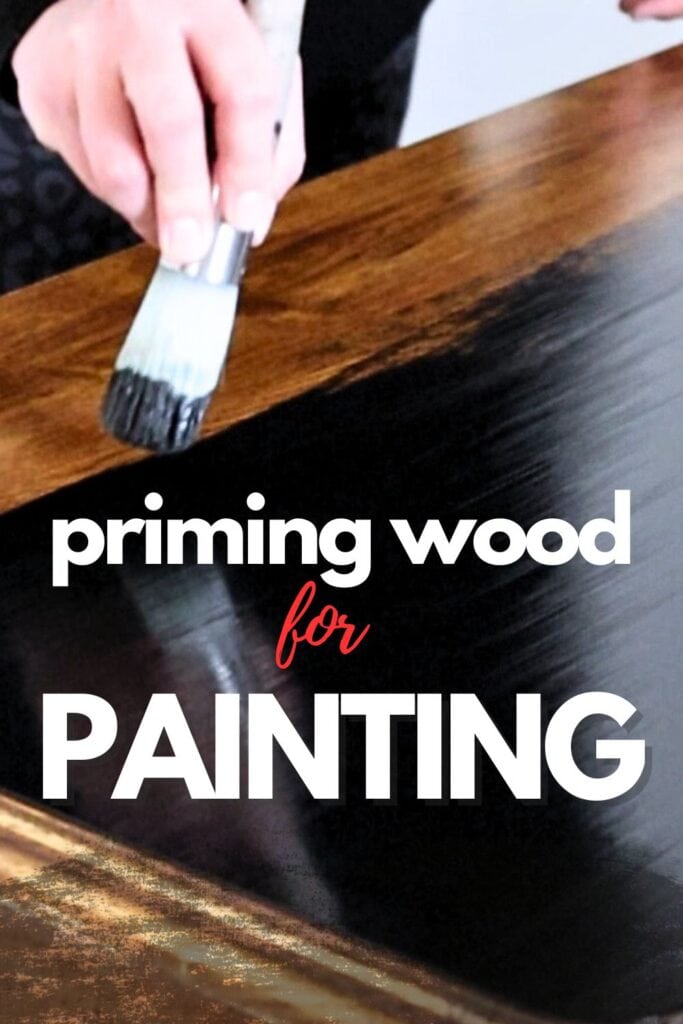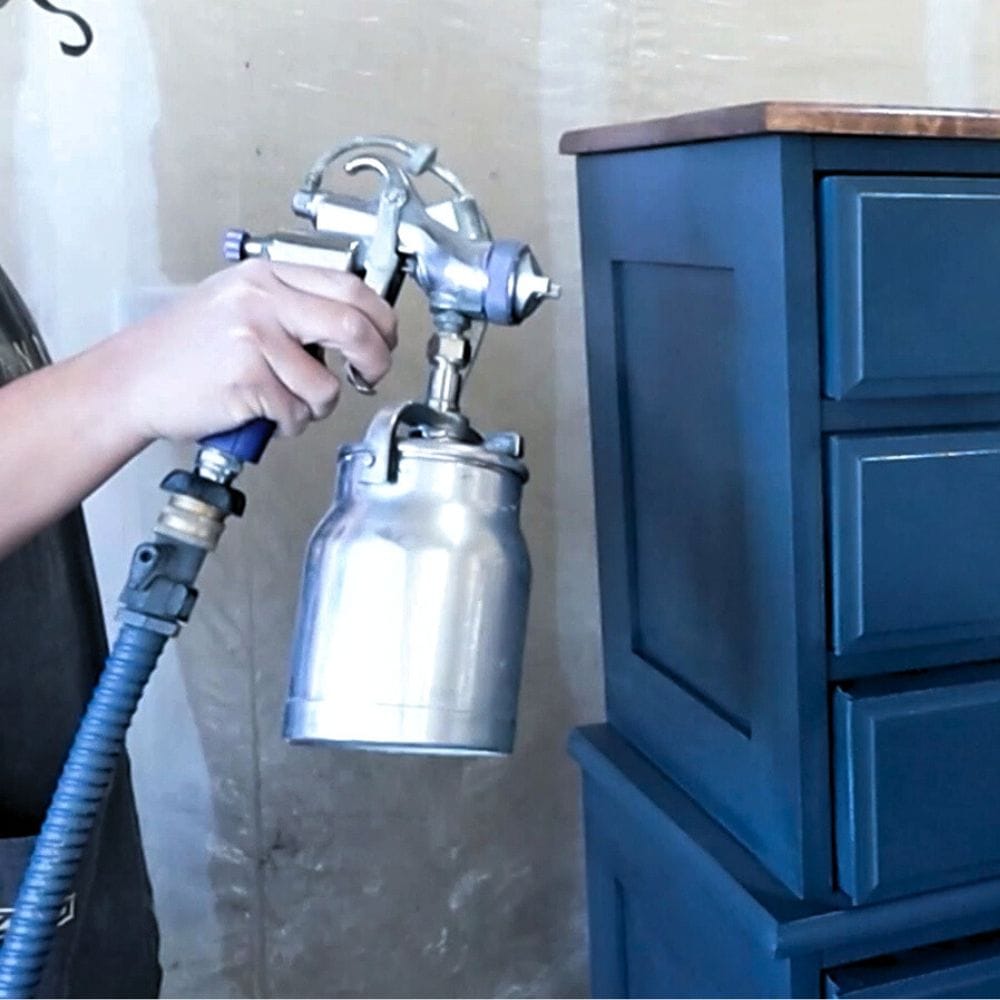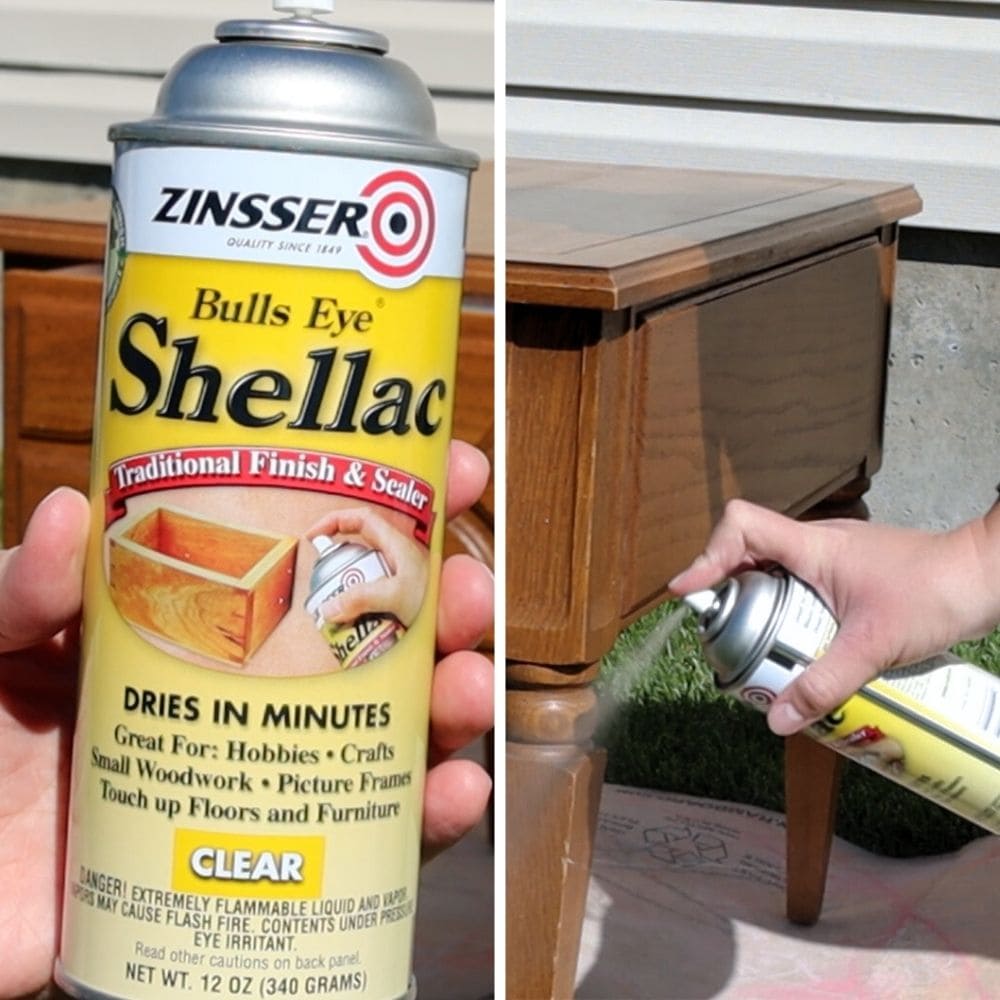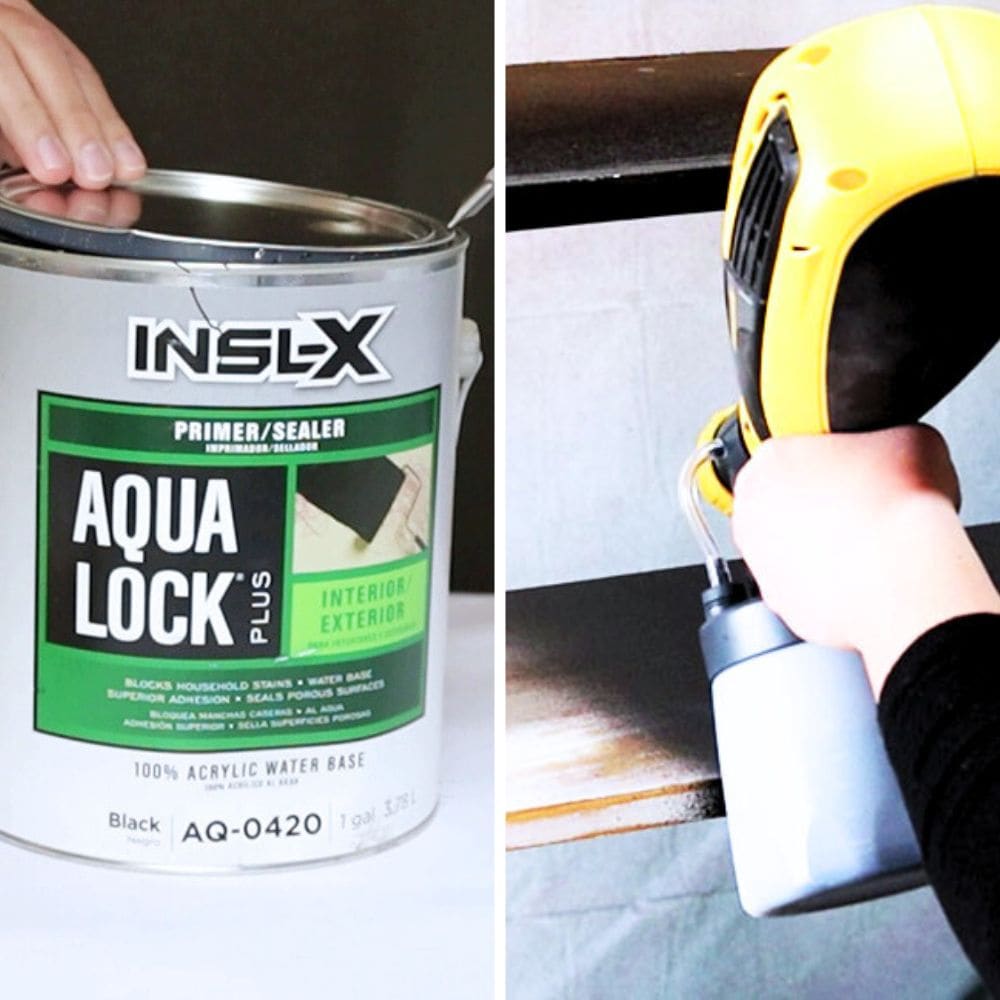Priming Wood for Painting
If you’re planning on tackling a furniture painting project, you’ll want to make sure you properly prepare the wood before starting. One of the most important steps in this process is priming wood for painting. Priming not only helps your paint adhere better, but it also creates a smoother and more long-lasting finish.
With the right furniture painting tools and supplies, this process can be quite simple. In this guide, we’ll walk you through everything you need to know about priming wood before you start painting.

Wood is a versatile and beautiful material that has been used in furniture-making for centuries. From classic oak to exotic tropical woods, each type of wood brings its own unique characteristics and beauty to any project.
But when it’s time to paint that wood, a bit of extra prep is needed to make sure you get the best results.
You may think that just slapping on a few coats of paint will do the trick, but without proper priming, you may end up with peeling, cracking, or uneven coverage. It’s an extra step that may seem tedious, but trust us, it’s well worth the effort.
Let’s first learn the benefits of priming wood!
Benefits of Priming Wood Before Painting
Priming wood before painting has several benefits that will help your furniture project turn out even better.
Helps Paint Stick
When you apply paint directly onto bare wood, it tends to soak into the pores of the wood, resulting in a blotchy and uneven finish. This is especially true for porous woods like pine or cedar.
By priming the wood first, you create a barrier between the paint and the wood, allowing for better adhesion and a more uniform finish.

You’ll also use less paint overall by priming first since the wood won’t soak up as much of it. This can save you money and time in the long run, as you’ll need fewer coats of paint to create the desired look.
Plus, with better adhesion, your paint is less likely to chip or peel over time. It’s a win-win situation!
Better Coverage
Priming wood not only helps your paint stick better, but it also allows for better coverage.
By creating a smooth and even surface, priming guarantees that your paint will go on evenly and cover the entire piece of wood without any patchiness or streaks.
This is especially important if you’re using a lighter color of paint over darker wood or if you’re going for a specific shade or hue.
Without priming, the natural color and grain of the wood may show through your paint, altering its appearance.
Primed wood provides a blank canvas for you to create your desired look without any surprises.
And let’s be honest, no one wants to spend hours painting only to end up with an uneven finish that needs multiple touch-ups. Save yourself the frustration and prime your wood first for smoother, more consistent coverage.
Blocks Stains from Coming Through
Stains on wood can be a nightmare to deal with, especially when you’re trying to paint over them.
No matter how many coats of paint you apply, those pesky stains seem to find their way through and ruin your hard work. That’s where priming comes in.

Priming wood also creates a barrier that blocks any existing stains from seeping through and staining your paint.
This is especially useful for old or weathered wood that may have stains from water damage, grease, or other substances.
By priming first, you can make sure your paint stays looking fresh and clean without any unwanted discoloration.
You can check out our post on how to stop stains from coming through paint for more tips on dealing with stubborn stains before and after painting.
But remember, prevention is key, and priming your wood beforehand can save you the hassle and headache of having to deal with bleed-through stains later on.
As an Amazon Associate, I earn from qualifying purchases. I also may earn from other qualifying purchases with other companies or get free product to review and use. All opinions are my own.
Clear Shellac Primer
If you’re looking for an easy and efficient way to prime your wood before painting, then clear shellac primer may be just what you need.
This type of primer comes in a spray can, making it convenient and mess-free to apply.

It’s perfect for use with many types of paint for furniture such as chalk paint, mineral paint, or acrylic paint, and creates a smooth surface that doesn’t require sanding before painting.
Even so, we still recommend sanding before painting furniture for the best results.
One of the biggest advantages of using clear shellac primer is its ability to block stains and bleed-through. You just have to let it dry properly overnight before applying a light-colored paint.
However, it’s important to note that clear shellac primer may not provide much help with paint coverage. So you may still need multiple coats of paint for full coverage.
Another benefit of clear shellac primer is that it dries quickly, allowing you to move on with your project in a timely manner.
But this also means that it can be tricky to apply with a brush as it may dry before you finish covering the surface.
And we recommend using this type of primer outside due to its strong odor, so make sure to work in a well-ventilated area for your own safety and comfort.
Here’s our painted light blue dresser makeover where we used clear shellac primer!
Pros
- Convenient and easy to apply with a spray can
- Blocks stains and bleed-through effectively
- Dries quickly, allowing for faster project completion
- Can be used with various types of paint for furniture
- Creates a smooth surface without requiring sanding before painting
Cons
- May not provide much help with paint coverage, still requiring multiple coats of paint
- Can be tricky to apply with a brush due to the quick drying time
- Has a strong odor, best used outdoors
Where to Buy Clear Shellac Primer
If you’re interested in trying out clear shellac primer for your furniture painting project, you can find it at most major hardware stores or online retailers like Amazon or Home Depot.
BIN Shellac Primer
BIN Shellac Primer is our next favorite primer for wood. It can be applied either by rolling it on with a Mohair roller or spraying it on.
If you choose to roll it on, the finish will feel smoother when dry but may have a slightly textured surface from the roller.

On the other hand, if you spray it on with a spray can, the finish will feel rougher because of its quick drying time. However, it’s effortless to sand down with 220 or 400 grit sandpaper for a smoother surface.
The BIN shellac’s thin consistency also makes it challenging to apply with a brush, but not impossible.
And just like clear shellac primer, it has a strong odor, so it’s best used outdoors or in a well-ventilated area.
But the quick drying time makes it ideal for those who want to start painting as soon as possible. Here’s our painted armoire makeover where we used BIN Shellac primer!
If you want to learn more about using BIN Shellac primer, you can check out this blog post about how to use BIN Shellac primer especially if you’re new to DIY projects!
Pros
- Can be rolled on or sprayed on for convenience
- Creates a smooth finish when rolled, easy to sand down when sprayed
- Dries quickly, allowing for faster project completion
Cons
- May have a slightly textured surface if rolled on
- Rough finish when sprayed, may require sanding for a smoother surface
- Difficult to apply with a brush due to thin consistency
- Strong odor, best used outdoors or in a well-ventilated area
Where to Buy BIN Shellac Primer
BIN shellac primer can be found at most major hardware stores or online retailers like Amazon and Home Depot. It’s also available in different sizes, so you can choose the amount that suits your project needs.
Aqua Lock Primer
For those looking to paint dark colors on wood, Aqua Lock Primer in black is the perfect solution. Not only is it water-based, making it easier to clean up, but it also helps paint adhere to the surface.
The black color of this primer means that fewer coats of dark paint will be needed for full coverage, saving you time and effort.

Aqua Lock Primer can be applied in various ways – rolled on with a roller, brushed on with a brush, or sprayed on with a paint sprayer. Its versatility allows you to choose the method that works best for your project.
You can check out your options for the best rollers for painting furniture here, the best paint brushes for painting furniture here, and the best HVLP paint sprayers for furniture here.
One of the standout features of Aqua Lock Primer is its thickness, which provides excellent coverage and helps smooth out imperfections on the surface.
And if you do choose to spray it on, you can just add up to 10% water to thin it out. Here’s our DIY modern grey dresser makeover where we used Aqua Lock primer!
Pros
- Water-based and easy to clean up
- Black color reduces the need for multiple coats of dark paint
- Can be applied with various methods – roller, brush, or spray
- Thick consistency provides excellent coverage
Cons
- May require thinning out if sprayed on
Where to Buy Aqua Lock Primer
You can get Aqua Lock Primer in Black at most major hardware stores or online at retailers like Amazon. It’s also available in white for those looking to paint lighter colors or don’t need the added benefit of darker paint coverage.
Clear shellac primer, BIN shellac primer, and Aqua Lock Primer are all excellent options that offer unique benefits depending on your project needs.
Whether you’re looking for convenience, stain-blocking abilities, or coverage for dark colors, these primers can help make your furniture painting project a success.
So next time you’re preparing to paint wood furniture, don’t forget to prime wood before painting for a professional and long-lasting finish.
More Priming Furniture Tips
- Best Water Based Primers
- How to Stop Wood Knots from Bleeding Through Paint
- Zinsser Cover Stain Primer Review
Follow us on YouTube to get more tips for painting furniture.
Or share your project with us on our Facebook Group and be part of our community. See you there!
